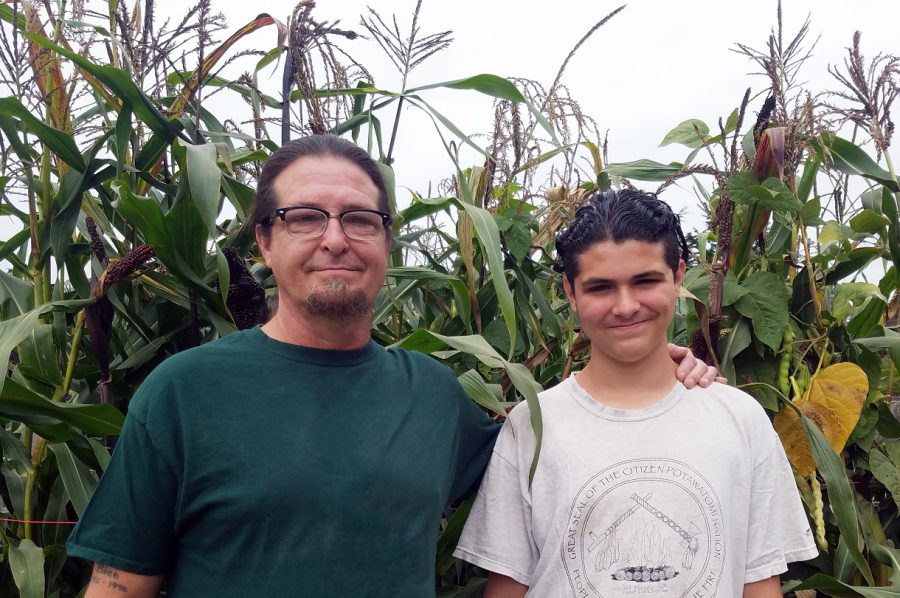
Shke Zheshké Family Farm is a “tiny little place” that Richard Abbey inherited a couple of years ago. He says it isn’t much to look at — yet — as he works to clean up the land he was gifted and transform it “into an actual farm.”
He’s building his dream on land out near Arroyo Grande, located on U.S. Highway 101 about 22 miles south of San Luis Obispo, California.
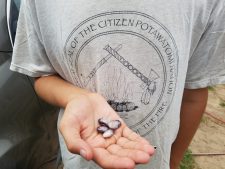
These days, he’s focused on seed production, and he established a seed partnership with the Jijak Foundation, a Hopkins, Michigan, nonprofit that preserves and promotes Potawatomi history and culture. Jijak is operated by Michigan’s Match-E-Be-Nash-She-Wish Band of Pottawatomi Indians, also known as the Gun Lake Tribe. Its seed bank includes “rare, endangered and even extinct” crops for production, Abbey said.
“Food is a huge part of Anishinabe culture,” he explained of connected cultural traits shared by Potawatomi, Algonquin, Ojibwe, Chippewa, Odawa, Oji-Cree and Mississaugas in the United States and Canada. “Seasons revolve around producing food — even language and culture.”
Right now, Shke Zheshké Family Farm doesn’t so much resemble an agricultural enterprise in the stereotypical sense. Abbey doesn’t harvest when his crops are plump, ripe and delicious and then sell them to shoppers in California farmers markets.
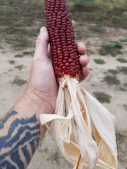

Instead, he plants small numbers of rare seeds — Ojibwe red flint corn, Gete Kosmin (literally meaning “old squash”), strawberry popcorn, Potawatomi white flour corn, Potawatomi pole beans, Potawatomi red seeded watermelon and even sema, or tobacco used as a blessing by Citizen Potawatomi Nation tribal members before gatherings and ceremonies. He’s replenishing and building, or propagating, seed banks so that he can eventually grow larger harvests meant for consumption.
Some call what Abbey promotes “food sovereignty,” but it’s more than that to him. He’s a proponent of self-sufficiency and reducing both tribal and federal government reliance while also enriching Potawatomi culture.
“What’s personally important to me?” he asked before answering. “Among Citizen Potawatomi, we’ve kind of drifted away from our culture due to a lot of factors. We’ve been removed from our homelands, there are issues with the federal government, of intermarriage, all kinds of stuff like that. …
“We can’t rely on the federal government and the tribal government,” he said, foreshadowing a tale he’ll soon share about his family history. “Potawatomi survived because of the self-sufficiency of its people.”
Abbey doesn’t use industrial machinery on his farm. He uses his hands and has recruited the help of his oldest son, who turned 14 in October.
“Individuals need to step up and make efforts themselves,” he said. “Last I heard, there are less than 50 Potawatomi fluent or first-language speakers.”
He hopes to see a day when “Indigenous people are free to celebrate culture and heritage like Italian, Jewish and Irish Americans do.”
Abbey mentions New York City as an example of a place where communities share a variety of customs and cuisines, each their own but existing together.
“I don’t want to see us lose any semblance of being Potawatomi,” he said, then added, “Some people take it too far and are antagonistic toward dominant cultures. We can still see language and food culture revived among our own band.”
Uncovering curiosity
He hasn’t always been this passionate about sustaining and promoting his ancestry.
“I was 30 before I understood the importance of my Potawatomi heritage,” he said. “I realized I had to start somewhere; I should at least start with my own family.”
Abbey spent his youth in the small town of Tribbey, Oklahoma, located in Pottawatomie County — Indian Territory land in 1891 — on which eponymous Alpheus M. Tribbey and his family staked a claim.
From an early age, his family cultivated Abbey’s connection with the land.
“We didn’t have a big farm or anything like that, but we raised a lot of our own food,” Abbey said.
He was raised by his uncle Lavell “Val” Gardenhire, who also worked with his hands in his successful community barbershop, before Abbey moved to California at age 11 or 12 to live with his mother.
When Abbey got older, he returned every summer to help out Lavell and the family, and continued working the soil when he could with a little subsistence farming. During visits, a friend, noticing Gardenhire’s fading health, encouraged Abbey to embrace his tribal heritage and learn more about his family.
About a decade ago, Abbey found himself at CPN’s Cultural Heritage Center in Shawnee, Oklahoma, digging through tribal records and newspapers.
Soon, he unearthed far more than he anticipated.
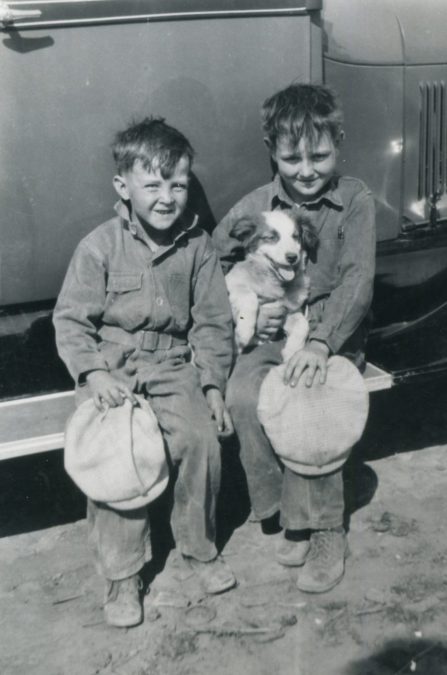
‘Light of day’
Lavell’s father, Wilburn Gardenhire, owned and ran a barber shop in Tribbey as he raised his four children in the late 1920s and early ’30s. What germinated in that tiny town when Lavell was just 9 years old has at times both rooted and withered the family for three-quarters of a century, influencing what each member would become.
Abbey’s uncle Lavell never talked about it much, until Abbey started uprooting it.
“My history is a sad one,” he said.
Lavell and Abbey both finally shared it with the Cultural Heritage Center in 2009.
“Maybe it is time that this is brought to the light of day, whether the people of Shawnee have to endure a little bit of embarrassment over it or not,” Abbey said during a 2009 oral history interview with the center. “It’s time the story was told.”
Parts of it are indeed sad and shocking, but it’s worth preserving and sharing, Abbey said.
“Our history is our future,” he recently said during an interview with the Hownikan.
Abbey’s family history is ripe with episodes of racism, anger, violence, grief, resilience and, to a large degree, the human fight for self-governance.
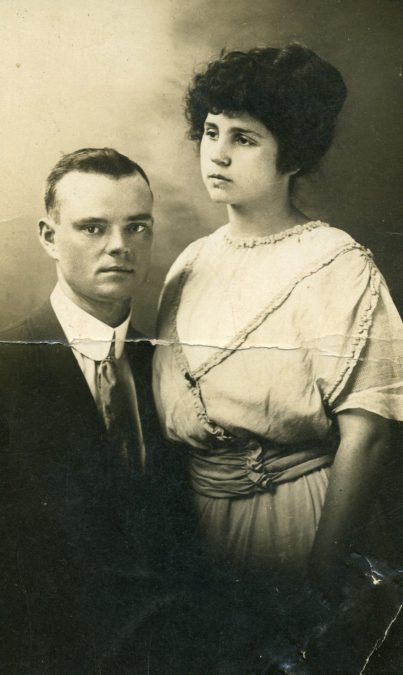
His family blended Native and German ancestry, Abbey said.
“The sheriff and his sons would walk up and down the street, yelling epithets and racial slurs. …,” he said. “They hated my grandfather because he was Indian and harassed him pretty regularly.”
One evening in 1931, as family history tells it, one of the sheriff’s boys attacked Lavell’s big sister after a basketball game. In his late 80s in 2009, speaking slowly and determinedly, his breathing aided with the help of an oxygen tank, Lavell Gardenhire finally told his story on the record.
“He was in his 20s,” he said of his sister’s alleged attacker. “My sister was 14 years old. … She was manhandled, molested and raped.”
Wilburn Gardenhire found his daughter after the assault and “was absolutely enraged,” Abbey said.
The following day, the sheriff’s boys strode down the street toward the barbershop. A young Gardenhire relative stepped outside to tell them to leave. A crowd grew around the commotion. Wilburn Gardenhire opened the shop door and looked out to see the sheriff’s boys beating his nephew.
“[Wilburn] kept the .45 up behind a stack of barber towels,” Lavell Gardenhire said. “… My dad — as I said, he had enough — of all of it. His daughter mistreated, the harassment and everything leading up to this.”
Abbey bluntly added: “He grabbed his .45, and he went outside.”
‘In the wind’
News stories from this time explain little. Some list the sheriff, age 62, as “a farmer.” He was killed during the “shooting affray,” and two of his sons were wounded. The man’s third son, who Abbey and the Gardenhires believe attacked Wilburn Gardenhire’s daughter, “cut and run.” The accused rapist escaped uninjured.
“[Wilburn] went back in the barbershop, put on a raincoat then closed his barbershop and left,” Abbey said in the 2009 interview. “According to the family story, he spent the night at the prospect cemetery sleeping on Mary’s grave — his mother’s grave. And then he was in the wind for a couple of days.”
Police soon caught up with Wilburn Gardenhire. In May 1933, convicted of killing the sheriff, he was sent to Oklahoma State Penitentiary in McAlester.
“He never spoke up in his own defense throughout his trial,” Abbey said. “He did not want to sully (his daughter’s) reputation. He did not want her to be considered a broken woman, which in those days, the standard was to blame the woman for her own victimization. … He never defended himself. He allowed himself to be tried in a kangaroo court.”
Rumors of racism and white supremacist groups boasting high-profile members persist, as has the family’s belief that someone took unlawful retribution on Wilburn Gardenhire, who died in prison several years after he was sent to McAlester. The official record says appendicitis, but the family noticed dozens of stab wounds as they placed Wilburn’s broken body into his casket, Abbey and Lavell Gardenhire said.
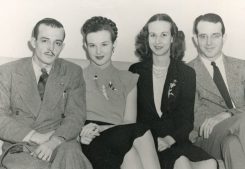
Wilburn Gardenhire’s children and family found themselves pitched to the wind as relatives in other states took them in. Lavell, about 10 years old, struck out on his own, eventually joining the Army, Abbey said.
He also returned to Tribbey. He refused to abandon his home and lived there until his death at age 87 in 2010.
“They created an element of fear in Tribbey,” Abbey said of the Wild West-like atmosphere in which Lavell grew up, and, to an extent, endured in some ways for close to a century.
“If you weren’t one of them, what they considered a white, upstanding Christian citizen, then you are someone who should be afraid — afraid for your families, afraid for your life, afraid for your property,” he said. “… And funny thing is, that up until just not more than 20 years before that, there really weren’t any white people around that area. It had always been Indian land. …“It’s really a place where Indian people should have been able to be safe. That was what was promised to us — that this would be a home for us, this would be a safe place for us to live. And it wasn’t.”
These stories — these truths — can’t stay buried forever, Abbey said. Like his dedication to developing his Shke Zheshké smallholding, he isn’t done digging.
‘They kind of live forever’
These days, Abbey and his son HolyRock Gardenhire — Abbey chose to use his mother’s maiden name as his son’s surname to honor his family — tend Shke Zheshké Family Farm. He largely funds his work himself, with help from a crowdfunded “gifting” concept he launched via Patreon in late July.
Now in his third season, Abbey said he’s learned a lot about nurturing the Anishinabe traditions, history and food of his ancestors. Each success is a gift; each failure a learning opportunity. This summer, volunteers helped him build greenhouses because Potawatomi red seeded watermelon needs special care in the California climate.
“We have strange weather,” he told the Hownikan during a phone interview from his farm. “June can actually be cold and miserable — hostile. It can kill them.”
The Potawatomi white flour corn and pole beans do well, though, as does Anishinabe tobacco.
“It’s an annual plant, but here, it’s perennial — they kind of live forever,” he said. “I learned to never remove the tobacco plant by the root. I cut one off at root-level, and it came back over the winter two times bigger than before.
“Right now, a lot of the tobacco used in ceremonies, as medicine, in religious observances — it’s commercial smoking tobacco. Some of is farmed by child labor or state penitentiary labor.”
Sharing “tobacco grown by a free man,” as he calls it, is an exciting prospect for Abbey, though he admitted he is wary of selling what his tribal culture deems a sacred plant. He took to tribe-related social media groups to ask what people thought about launching a Patreon effort.
“I want to provide them (gifts) to other people in our band — that’s my main goal,” he said. Here, his voice raises with excitement. “It’s the nature of gift-giving; of offerings. To thank them, I send them a little bundle of tobacco for their gift to cover the cost of growing it.”
He harvested and cured his first small sema crop in September.
“The future? I don’t know what that’ll bring. I don’t know yet,” Abbey admitted. “Our legacy is what we make it.”
Learn more
- Shke Zheshké Family Farm: facebook.com/shkezheshkefarm
- Richard Abbey and Shke Zheshké Family Farm’s Patreon crowdfunding campaign: patreon.com/RichardAbbey
- Jijak Foundation: facebook.com/JijackFoundation
